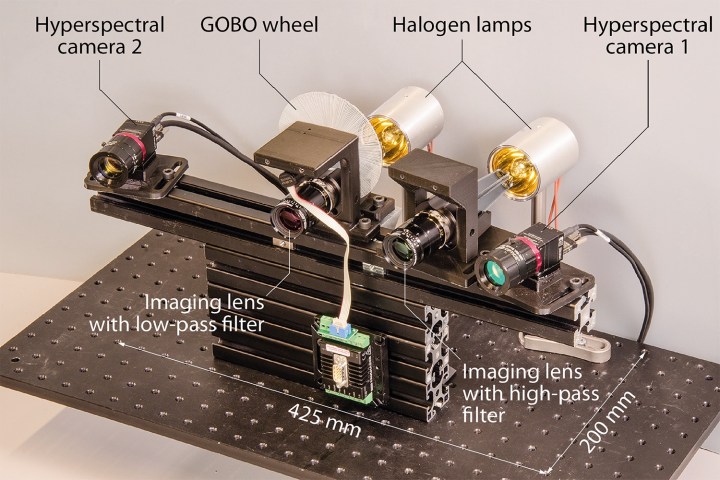
Engineers in Germany have developed a new compact imaging system that’s capable of recording hyperspectral images in five dimensions. This 5D process means capturing data related to multiple wavelengths of light, along with spatial coordinates, as a function of time. The 5D system represents the first laboratory setup in which high-quality spatial and spectral resolution, depth accuracy, and high frame rate imaging have all been combined into a single compact system. It opens up exciting possibilities for security, medical imaging — and even grocery shopping.
The basic principle of the sensor is not dissimilar to the stereo vision that we possess as humans. However, instead of two eyes, which are limited to the detection of only visible light, the 5D imaging system utilizes two hyperspectral cameras operating in the visible to near-infrared range. Because the scene is captured from two slightly different directions, it’s possible to establish the depth information by identifying points on the surface that are present in both camera views. These images can be taken as rapidly as 17 frames per second, making this system faster than similar ones.
“There is a rapidly growing number of applications, which require the determination of more than just one property of macroscopic measurement objects,” Stefan Heist, research group leader at Friedrich-Schiller University, Jena, and the Fraunhofer Institute for Applied Optics and Precision Engineering, told Digital Trends. “Whether in medical imaging, precision agriculture, or optical sorting, for meaningful and reliable results, both the shape of the objects and their spectral properties have to be measured.”
The technology could prove useful for taking historical records of cultural artifacts — not just how they appear but also their material composition. To showcase this application, the researchers used their 5D camera to digitally document a historical relief globe from 1885. It could also be used for rapid, contactless identification of persons for security purposes — with spectral information adding another layer to existing biometric systems.
Right now, the imaging system is about the size of a laptop, although the researchers are hoping to shrink it further. “If the entire sensor can be further miniaturized so that it can eventually be placed in the smartphone, end users at home can [also] benefit from the technology,” Heist said. “It could then be used, for example, for the fast inspection of the condition of fruit or vegetables, or for personal medical monitoring.”
While he noted that the implementation of some of these uses cases will “take some time,” this is still an exciting step forward when it comes to imaging technology.
You can read more about it in a research paper recently published in the journal Optics Express.


